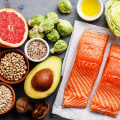Yes and no, says Amy E. Rothberg, MD, PhD, Obesity Specialist and Director of Michigan Medicine Weight Management Clinic. In theory, yes, but the pitfalls here are the same as with keto. There's a good chance that weight loss won't sustain because it's not meant to keep up with extreme carbohydrate reduction forever.
When it comes to low-carb diets, there are many options available. The Atkins diet is the best-known low-carb eating plan. It involves cutting back on all high-carbohydrate foods while eating as much protein and fat as desired. But there are other diets that also fall into the low-carb category, such as the Paleo diet and the South Beach diet.
Most Americans eat more than 200 grams (g) of carbohydrates per day, so diving lower than that is going to be a lower-carb diet in one way or another. There is no official guide that defines a low-carb diet, but generally speaking, consuming between 50 and 100 g of carbohydrates a day is considered a basic low-carb diet. The Atkins diet is one of the strictest ways to eat a low-carb diet because it limits the consumption of foods that in total fall below 50 g of carbohydrates per day, although some experts recommend consuming less than 30 or 20 g. This plan is individualized, allowing you to eat the amount that best suits your body's needs and gives you room to choose which carbohydrates you want to include.
The Whole30 program is not specifically designed to be low in carbohydrates. For 30 days, you are asked to eat only meat, seafood, vegetables, fruits and fats, and to stay away from added sugar of any kind: alcohol, grains, legumes, and dairy products. It can be a radical approach for someone who is used to eating the standard American diet and can help you lose weight. A 2003 research in the New England Journal of Medicine found that people on a low-carb diet lost more weight than people on a low-fat diet after 6 months, but not after 12 months.
If you have certain medical conditions, you should talk to your provider before taking Keto. For example, it's not a good diet if you have chronic kidney disease. And if you're diabetic and taking insulin, you should adjust your medications before starting a ketogenic diet. The Paleo diet gets its name from the Paleolithic era, the Stone Age.
The idea behind the Paleo diet is that you should only eat foods that can be hunted or harvested by humans in the Paleolithic era. The Atkins diet was originally promoted in the 1970s and has maintained its popularity ever since. It allows for higher amounts of carbohydrates and encourages much more protein from meat, butter, eggs and cheese. Bread, pasta, potatoes, cereals, sugary foods, and high-sugar fruits and vegetables are out.
The South Beach diet is lower in carbs than other diets but it's not as strict as Atkins or Keto. Instead of focusing on cutting out carbs completely, it encourages balance by eating a mix of good carbohydrates, healthy fats and lean proteins such as whole grains, fruits, vegetables, lean meats and healthy oils. You also become more forgiving with carbohydrates along the way as you progress from the elimination phase to the long-term.






